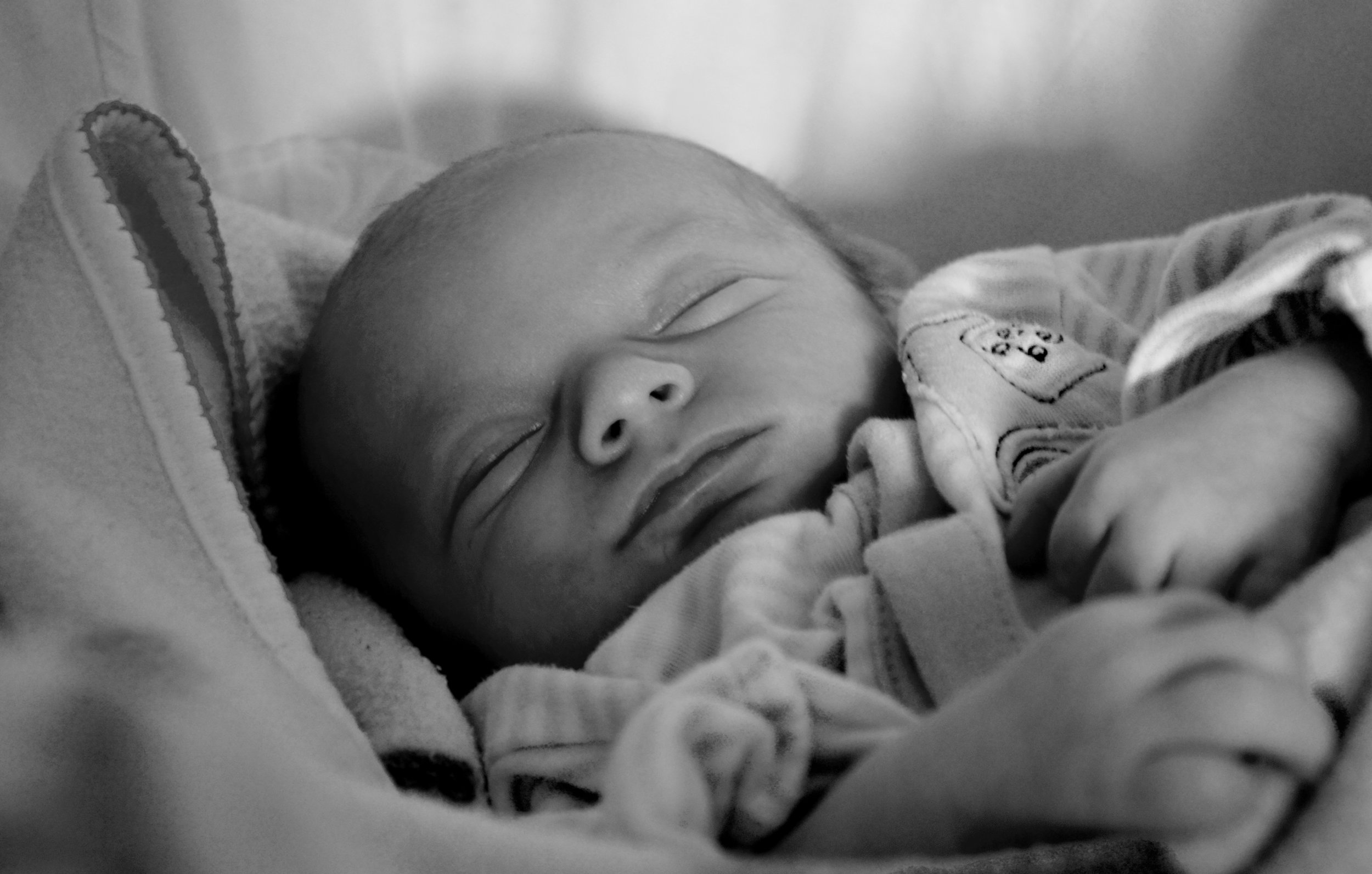By Pranav Parikh
Due to the complexities of a multi-trillion-dollar federal budget, it can often be difficult to understand where all the money ends up. For recipients of Medicaid and their children, part of the government’s longstanding policy is to provide access to quality healthcare low-income communities could not otherwise afford. Medicaid recipients represent approximately 23 percent of the total U.S. population, with an enrollment of 74,550,529 individuals.
According to President Donald Trump’s Fiscal Year (FY) 2018 proposed budget, deemed the “America First” budget, and a nonpartisan CBO report, Medicaid will receive cuts totaling $610 billion USD over the next 10 years. In 2015, the U.S. Government spent $545.1 billion USD on Medicaid services. President Trump alludes to waste and redundancies as his justification of the proposed cuts.
One of the planned cuts will negatively impact newborn children and be detrimental to the well-being of infants across the country: Universal Newborn Hearing Screening. The terrifying impact is summarized below.
What exactly is being removed?
In his FY18 proposed budget, President Trump upheld his campaign promise by cutting what he deems “unnecessary and wasteful spending.” Unfortunately, one program that got the axe was the $18 million USD allocated towards newborn hearing screenings. This earmarked funding has doubled the percentage of newborns receiving hearing screenings before leaving the hospital from 46.5% to 97% just in the last decade. Without early detection, children will be at a distinct disadvantage in tackling hearing loss present at birth.
Why does this matter?
Every day, 33 children are born with some form of hearing loss, designating hearing loss as the most common congenital birth defect in the U.S. Reasons babies may have hearing loss present at birth include an inherited trait, ototoxic chemical, or a viral infection during a mother’s pregnancy. Challenges associated with having hearing loss can be overcome through early intervention, however it is imperative treatment and therapy are started as early as possible. As stated on the U.S. Government Department of Health and Human Services website, “If not identified early, [hearing loss] is likely to delay or impair a child’s development. Hearing problems are difficult to detect through observation alone, so almost all newborns have their hearing checked with special equipment.”
What types of tests are done?
Aside from behavioral characteristics displayed by infants with hearing loss, there are two main tests conducted by physicians to determine any level of auditory impairment. The first of which is called Otoacoustic Emissions, a test designed to the test functionality of outer hair cells. A negative reading on this test is typically associated with cochlear dysfunction. The second test is called Auditory Brainstem Response (ABR) and determines activity of the auditory nerve through stimulation in the baby’s ear. A negative reading on this test indicates some issue with the vestibulocochlear nerve such as auditory neuropathy, but could also indicate problems with other parts of the ear. Both of these tests can be done while the baby is asleep and offer more concrete evidence to either rule out or diagnose infant hearing loss.
Have studies shown early intervention to be more effectual than later in childhood?
Yes, there are many studies that have shown that early intervention, especially for those receiving treatment within the first six months after birth, increases levels of cognitive function and advanced development. The control group of one study, led by Dr. Christine Yoshinaga-Itano at the University of Colorado-Boulder, showed that those who did not receive treatment or therapy within the first six months after birth had greater difficulty with oral communication and language comprehension.
What happens if children have undiagnosed hearing loss?
Hearing loss as a condition can present a number of symptoms associated with other disabilities, leading to improper diagnoses. For example, when children exhibit a lack of response to loud noise, or don't answer when spoken to, they sometimes are misdiagnosed by professionals as being autistic. If hearing loss is present and detected at birth, doctors will have access to necessary information earlier and children will be better off in the long run in developing their communication and learning abilities.
If funding for newborn hearing screening is decreased or removed entirely, what does that mean for those suffering from hearing loss?
At the moment, only 67.1% of those diagnosed with hearing loss receive early intervention before six months of age. With lower early detection and screening rates, this percentage will drop further. Without early intervention programs in place, children are at a noticeable disadvantage in developing hearing and speech functionality. After the age of three, it is considerably more difficult for children to develop the speaking and listening skills that are in line with their typical-hearing peers.
Would early intervention actually save money down the road in potential education costs?Some students with hearing loss utilize special education services, such as CART or note-taking, to ensure they don’t miss any of the materials and learnings while in the classroom. Access to the necessary technology and equipment, as well as highly trained teachers, is an expense incurred by school districts across the country.
A recent report released by the National Center for Hearing Assessment and Management states that treatment of hearing loss in children within the first three months of life can save up to $400,000 USD in eventual special educational costs by the time the hard of hearing student graduates high school. By bridging the gap early, and ensuring better interpersonal and cognitive skills in the first years of age, these children will require much less specialized instruction in future years. Essentially, early detection and intervention pays for itself.
Is there any legislation, not including the President’s proposed budget, that addresses this issue?
In March 2017, the Early Hearing Detection and Intervention (EDHI) Act was introduced on the House floor by Representatives Doris Matsui (D-CA-06) and Brett Guthrie (R-KY-02). A companion measure was also introduced in the Senate by Senators Rob Portman (R-OH) and Tim Kaine (D-VA). EHDI reauthorizes funding for Universal Newborn Hearing Screening for the next five (5) years, as well as establishes a database hub to collect information on the results of these tests. If the measure passes, parents will be assured of their child’s hearing health, and one of the nation’s largest public health concerns receives the necessary attention it deserves.
Undoubtedly, funding for newborn hearing screening is imperative. Hearing Health Foundation (HHF)'s Pranav Parikh spoke with Congresswoman Matsui’s staff on the reasons for proposing the legislation, and why she took the lead on tackling such an important issue. “So much of a child’s development happens in the first few years of their life, which is why early detection and intervention is so important,” said Matsui. “This bill will ensure that more infants have access to critical hearing screenings, so parents can be informed about the options for their children’s care.” It is comforting to know children suffering with hearing loss have an ally in our nation’s capital.
As Vickie Glenn, a Medicaid Coordinator for Tri-County Special Education recently stated in a New York Times article, “This isn’t Republicans or Democrats. It’s just kids.” Fortunately, President Trump’s proposed budget appears to be a “purely political document,” according to Peter Coy from Bloomberg BusinessWeek, possibly serving as a trial balloon and nothing more. Congress, even with a conservative majority consisting of many fiscal hawks, will likely reject many of the proposed cuts, as Texas Senator and chairman of the Freedom Caucus John Cornyn remarked, “we know the President’s budget isn’t going to be passed as is.” For now, at least, Universal Newborn Hearing Screening will receive its necessary and deserved funding.
And, finally, an urgent call to action from Nadine Deghan, CEO of HHF:
HHF has strongly supported Newborn Hearing Screening. In the 1990s, we championed legislation to encourage these simple but critical tests for our nation’s babies. For those who feel passionately about newborn screening funding, please contact your Congressional Representative and your Senator to let them know your views.













